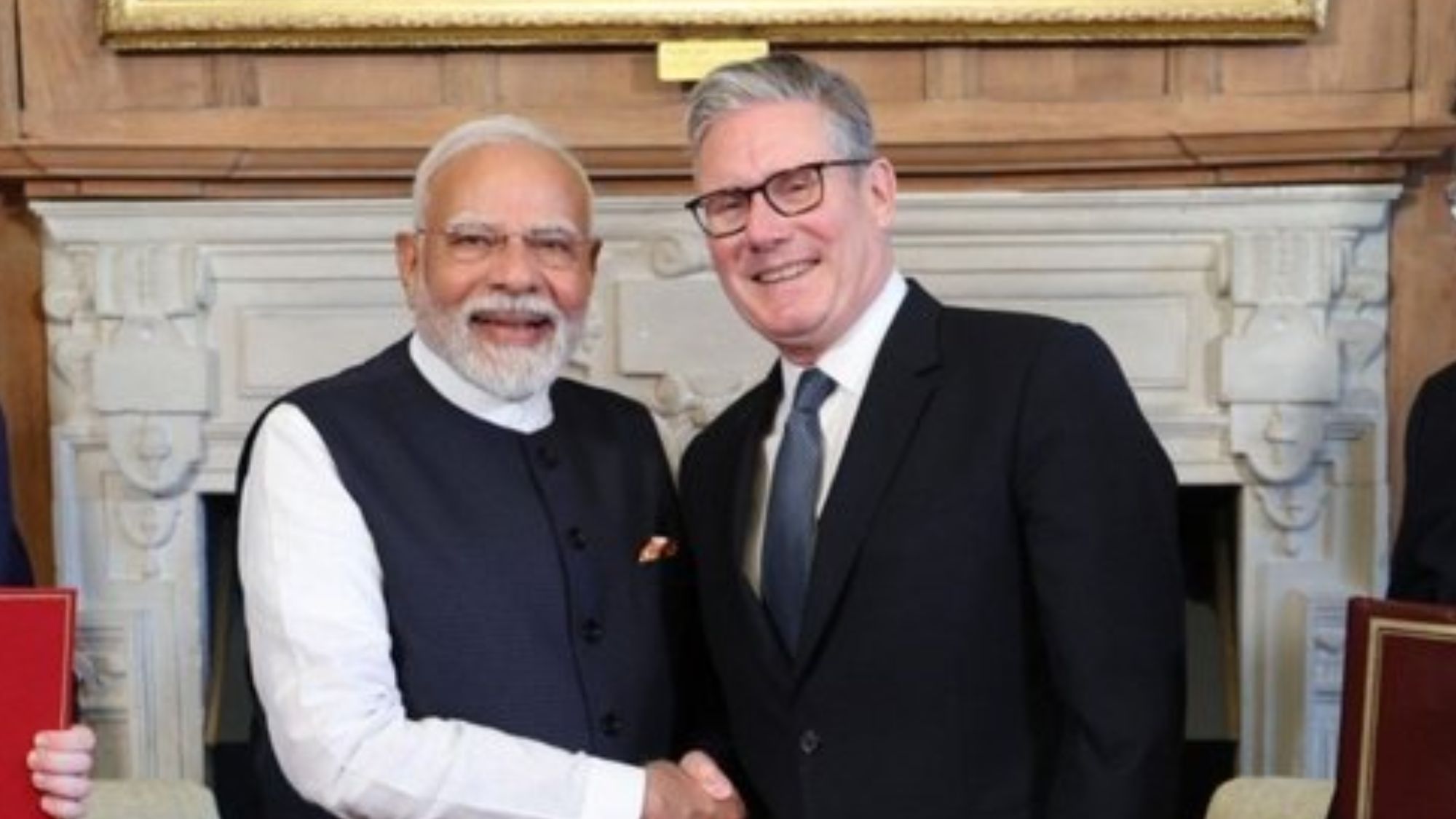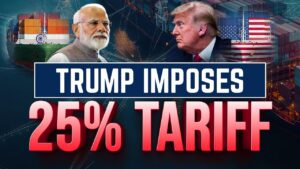I. Introduction: A New Era in Trade Relations
On July 24, 2025, India and the UK signed a major Free Trade Agreement (FTA) after nearly three years of talks. This agreement is designed to boost imports and exports between the two nations and support long-term economic growth.
More than just reducing tariffs, the FTA will:
- Increase the movement of goods and services.
- Improve conditions for investment.
- Open up better market access in both countries.
With trade projected to reach $120 billion by 2030, this deal marks a new level of economic partnership between India and the UK.
II. The Free Trade Agreement: Key Economic Impact
A. Trade Growth and Market Expansion
- Bilateral trade is expected to rise by $50 billion in the next five years.
- Nearly 99% of Indian exports to the UK will now enter duty-free.
- UK exports to India will also benefit, with tariffs cut on 90% of goods.
B. Sector Highlights
India’s Export Wins:
- Big gains for textiles, pharmaceuticals, auto parts, and marine products.
- IT hardware and engineering goods also see improved access.
UK’s Export Gains:
- Lower duties on Scotch whisky, luxury cars, aerospace parts, and medical equipment.
- Opportunities to reach India’s fast-growing middle-class consumer base.
C. Labour and Services
- India secured easier movement for skilled workers in IT, healthcare, and finance.
- UK service firms get smoother entry into Indian markets like legal, education, and consulting.
III. Investment and Trade Infrastructure
A. Investment Liberalization
- Faster approvals and stronger protections for cross-border investors.
- UK investments now welcomed in defense, digital, energy, and infrastructure sectors.
- Indian businesses can invest more freely in the UK’s tech, real estate, and pharma sectors.
B. Trade Zones and Innovation Hubs
- Special trade corridors are being developed to support export-oriented industries.
Innovation clusters in London, Manchester, Bengaluru, and Hyderabad will help startups and exporters grow.
IV. Accelerating Trade through Agreements and Logistics
A. Tariff Reductions
- India’s exports enjoy near-complete duty-free access to the UK.
- UK goods now face significantly lower tariffs in India, especially for high-end items.
B. Smoother Trade Processes
- Easier customs clearance with digital paperwork and blockchain pilots.
- Steps to align product standards and certifications.
C. Joint Ventures & Co-Financing
- India and the UK are launching public-private platforms to fund clean energy, digital tech, and manufacturing.
Cross-border partnerships in semiconductors, AI, and green energy will drive long-term trade gains.
V. The 2030 Roadmap: From Vision to Results
A. Foundation for the FTA
- The India–UK Roadmap 2030, launched in 2021, led to this trade agreement.
- It aimed to double trade by 2030, and laid the groundwork for tariff cuts, labour mobility, and easier investment.
B. Institutional Support
- Oversight bodies like JETCO and Financial Dialogues ensure smooth implementation.
- Trade targets are reviewed annually, with feedback from businesses in both countries.
VI. Conclusion: A Trade Alliance for the Future
The India–UK Free Trade Agreement is a powerful step toward deeper economic cooperation. It simplifies the movement of goods, boosts trade-related investments, and creates win-win opportunities for exporters and importers on both sides.
By 2030, this agreement is expected to:
- Double trade volumes.
- Strengthen supply chains.
- Support innovation and job creation through exports.
India and the UK are no longer just trading nations—they’re long-term trade partners shaping the global economy together.
1. What is the India–UK Free Trade Agreement (FTA)?
The FTA, signed on July 24, 2025, is a comprehensive trade pact that reduces or eliminates tariffs on a wide range of goods and services between India and the UK. It aims to enhance bilateral trade, attract investment, and strengthen long-term economic ties.
2. What are the main benefits for Indian exporters?
Indian exporters now have duty-free access on 99% of their tariff lines, giving a strong boost to sectors like textiles, pharmaceuticals, marine products, auto components, and engineering goods.
3. What are the benefits for UK exporters?
The UK gains reduced tariffs on 90% of its exports to India. Key sectors such as whisky, premium automobiles, aerospace components, and medical devices stand to benefit, with some tariff cuts being steep and immediate.
4. How much will bilateral trade increase under the FTA?
The agreement is expected to increase bilateral trade by more than $50 billion over the next five years, with a goal of reaching $120 billion in total trade volume by 2030.
5. Will services and labour mobility be impacted?
Yes. The FTA facilitates easier movement of Indian professionals in IT, healthcare, and finance to the UK. It also expands opportunities for UK service providers in India’s legal, financial, and education sectors.




